WHAT IS THE MEANING OF JYOTIRLINGA?
Jyotirlingam, is a devotional representation of Shiva. Jyotirlinga means column or pillar of light. The pillar represents that there is no beginning or end. When Lord Brahma and Lord Vishnu argued regarding who is the supreme God. Lord Shiva appeared as a column of light, and assigned them a task to locate the ends of the pillar of light. However, they were unsuccessful. It is believed that the jyotirlingas are located where these columns of light fell. The Shiva Purana, mentions 64 original jyotirlinga shrines in India, out of which 12 are the most sacred and are believed to be Swayambhu, which means they were created without human intervention. Devotees consider visiting these Jyotirlingas to be very auspicious, as each temple is known for the supreme powers of Shiva.

12 Jyotirling name
12 Jyotirlinga Locations
Somnath
Gir, Gujarat
Mallikarjuna
Srisailam, Andhra Pradesh
Mahakaleshwar
Ujjain, Madhya Pradesh
Omkareshwar
Khandwa, Madhya Pradesh
Kedarnath
Rudraprayag, Uttarakhand
Bhimashankar
Pune, Maharashtra
Kashi Vishwanath
Varanasi, Uttar Pradesh
Trimbakeshwar
Nashik, Maharashtra
Baidyanath
Deoghar, Jharkhand
Nageshwara
Dwarka, Gujarat
Ramanathaswamy
Rameswaram, Tamil Nadu
Grishneshwar
Aurangabad, Maharashtra
Shree Dwadasha Jyotirlingam Stotram
श्री द्वादश ज्योतिर्लिङ्ग स्तोत्रम्:
Saurashtre Somanatham Cha Shrishaile Mallikarjunam |
Ujjaiyinyam Mahakaalam Omkarama-Maleshwaram |1||
सौराष्ट्रे सोमनाथंच श्रीशैले मल्लिकार्जुनम् |
उज्जयिन्यां महाकालमोंकारममलेश्वरम् ||
Meaning
- Somnath in Saurashtra and Mallikarjunam in Shri-Shailam; Mahakaal in Ujjain, Omkareshwar in Amleshwar.
Paralyam Vaidyanatham Cha Dakinyam Bheemashankaram |
Setubandhe Tu Ramesham Nagesham Darukavane |2||
परल्यां वैद्यनाथं चडाकिन्यां भीमशंकरम् |
सेतुबन्धे तु रामेशंनागेशं दारुकाबने ||
Meaning
- Vaidyanath in Paralya and Bhimashankaram in Dakinya; Ramesham (Rameshwaram) in Sethubandh, Nagesham (Nageshwar) in Darauka-Vana.
Varanasyam Tu Vishvesham Tryambakam Gautamitate |
Himalaye Tu Kedaram Gushmesham Cha Shivalaye |3||
वाराणस्या तु वश्वेशंत्र्यम्बकं गौतमी तटे |
हिमालये तु केदारंघुशमेशं चशिवालये ||
Meaning
- Vishwanath in Vanarasi, Triambakam on the bank of the river Gautami, Kedarnath in Himalayas and Gushmeshwar in Shivalaya.
Atani Jyotirlingani Sayam Pratah Pathennarah |
Saptajanma Kritam Papam Smaranena Vinashyati |4||
एतानि ज्योतिर्लिंगानि सायं प्रात: पठेन्नर:|
सप्त जन्म कृतंपापं स्मरणेनविनश्यति ||
It is believed that those who recite the strota daily, dissolve all sins committed in the past seven births. Their wishes get fulfilled by Shiva’s grace.
SOMNATH

Somnath temple is the first Jyotirlinga. It is also called Deo Patan, located in Prabhas Patan, Veraval in Gujarat. The structure makes it a picturesque pilgrimage spot. The Dwadash Jyotirling pilgrimage commences at the Somnath temple. According to the Shiva Puranas, moon loved his wife Rohini the most out of his 27 wives. His wives represent the 27 Nakhshatras, who were the daughters of Daksha Prajapati.
Due to the moon’s indifference towards his other wives, he was cursed by Daksha Prajapati that he would lose his lustre. He cursed the moon that his powers would decline day by day and he would lose his lustre, and he would eventually disappear also known as waning of the moon. An upset moon visited Somnath in Gujarat, along with his wife Rohini, and worshipped the Sparsh Lingam. Pleased with his devotion, Lord Shiva blessed the moon that he would regain his powers and lustre day by day and this cycle of waxing and waning will continue in perpetuity. Hence moon increases in brightness during Shukla Paksha for a fortnight and then wanes for a fortnight during Krishna Paksha.
The moon was rechristened as Somachandra. Hence the place is known as Somnath. The temple was reconstructed in the past after destruction by multiple Muslim invaders. Mahmud Ghazni had invaded the temple in the 11th century. It is said that the Somnath temple was built around the 9th century CE. After India's independence, the ruins were demolished. The temple was reconstructed in the Māru-Gurjara architectural style. The reconstruction began following the orders of Vallabhbhai Patel, the first Home Minister of India. It was completed in May 1951 after his death.
Map location- https://goo.gl/maps/23kYjq2QZymoYuU46
MALLIKARJUNA
.jpg)
Mallikarjuna Jyotirlinga temple or Srisailam temple is located at Srisailam in Andhra Pradesh, on the banks of the river Krishna. It is known as the Kailash of the South. As per the Shiv Puranas, Lord Shiva and Goddess Parvati could not take a decision regarding whether Ganesha or Kartikeya, should get married first. To determine who would marry first, a competition was conducted. Whoever would circumvent the world first would be declared as the winner. Lord Kartikeya immediately set off on his peacock, a mount. Lord Ganesha, on the other hand, went in circles around his parents and expressed that they meant the world to him. It is believed that walking in a circular manner around one’s parents is equivalent to going around the world. The pleased parents married Ganesha off to Siddhi (spiritual powers) and Riddhi (prosperity). According to a few legends, Buddhi which signifies the intellect is also believed to be Ganesha’s wife. When Lord Kartikeya learnt about this development, he was upset, left for Mount Krounch and decided to remain unmarried. Shiva and Parvati made a visit to Mount Krounch. Hence, a linga for Shiva and a Shakti Peetha for Parvati has been constructed at Mallikarjuna.
Map location- https://goo.gl/maps/hdiZC8i333Sfg4t86
MAHAKALESHWAR
.jpg)
Mahakaleshwar Jyotirlinga is the third Jyotirlinga which is located on the banks of the river Kshipra, in Ujjain, Madhya Pradesh. Mahakal is the only jyotirlinga facing the south, while all the other jyotirlingas are placed facing the east, since the south direction represents death. So, people worship Mahakaleshwar to prevent untimely death.
As per a local legend, King Chandrasena, a Shiva devotee, ruled Ujjain. Shiva appeared in his Mahakal form and conquered his enemies. He agreed to reside in Ujjain to take care of the city. In the early part of the Meghadutam, in the 4th century, Kalidasa has described the Mahakal temple.
As another story goes, a Brahmana named Vedapriya had four sons, Devapriya, Priyamedha, Suvrita and Suvrata. They used to read the Vedas, but a rakshasa named Dushana could not stand the idea of professing a religion. The four Brahmanas were attacked by the demons. Even when the demon threatened to kill the Brahmanas, they continued to pray to Shiva. Seeing their devotion, Lord Shiva appeared in front of them. Shiva destroyed Dushana and killed the soldiers. Hence Shiva is known as Mahakala.
Map location- https://goo.gl/maps/AvPSX8Fj3Fu3qDa49
OMKARESHWAR
Omkareshwar Jyotirlinga temple is located on an island at Khandwa in Madhya Pradesh. It is a sacred pilgrimage where the fourth Jyotirlinga is worshipped. There are different stories associated with this temple. As per Shiva Purana, Narada had visited the Vindhya mountains. It is believed that while the Vindhyas is the highest peak, Narada claimed that Mount Sumeru was superior than the Vindhyas, since the Gods were always present there. So, the Vindhyas prayed to Lord Shiva for being at par with Sumeru. Lord Shiva then appeared before the Vindhya mountains. Thus, the Omkareshwar temple came into existence.
Map location- https://goo.gl/maps/dg5DUM51L4n63niH6
KEDARNATH
The fifth Jyotirlinga is located at Kedarnath in Rudraprayag district of Uttarakhand. The Kedarnath temple remains open for six months a year.
As the story goes, sages Nara and Narayana were Lord Vishnu’s incarnation. They were seeking Shiva’s presence in the form of a linga on peak Kedara. After severe penance, Lord Shiva appeared before them.
Map location-
https://goo.gl/maps/etavTUeYTkjD28vG7
BHIMASHANKAR
Bhimashankar Jyotirlinga temple is the sixth Jyotirlinga located at Khed near Pune, Maharashtra. The story dates back to Ramayana. Bhima, the son of Kumbhakarna learnt that Lord Rama, an incarnation of Lord Vishnu had killed his father. So Bhima decided to seek revenge.
He targeted the King of Kamrupa who worshipped Vishnu and imprisoned him and his wife. However, Lord Shiva arose from the Linga. He destroyed all the weapons used by Bhima and killed him.
Map location-
https://goo.gl/maps/jXikopHfzmsgVdQK6
KASHI VISHWANATH
The seventh Jyotirlingam, is located at Kashi Vishwanath temple in Varanasi, Uttar Pradesh. As per the Shiva Puranas, Brahma, the God of creation and Vishnu, the God of preservation argued about who was supreme. To test their faith, Shiva pierced the three worlds in the form of an endless pillar of light. To ascertain who was mightier, Vishnu incarnated as a boar, while Brahma took the form of a swan. Brahma lied that he had figured out the end point of the pillar of light. However, Vishnu confessed that he could not locate the end point of the pillar of light. Later, Shiva took the form of wrathful Bhairava. He cut off Brahma's head, and cursed him that he would not be worshipped.
Another legend states that Brahma performed severe penance at Kashi Vishwanath. Vishnu shook his head in disbelief, and a jewel fell off from Vishnu’s ear at Manikarnika, a famous tirtha. Lord Shiva and Goddess Parvati had visited Brahma, who sang hymns to praise Lord Shiva. While he was chanting the hymns, he mispronounced one of the hymns. Enraged, Shiva severed Brahma’s head. The head was stuck on Shiva’s back, and it fell off only when Shiva went to Varanasi. This made him realise the significance of Kashi.
Map location- https://goo.gl/maps/RWsbTsXB5Wj51mbt5
TRIMBAKESHWAR
The eighth Jyotirlinga is located at Trimbakeshwar near Brahmagiri mountains, on the banks of the river Godavari at Nashik, Maharashtra. The Shiva Puranas mention Shiva resided at Trimbakeshwar upon the request of the river Godavari, Gautam rishi, and other Gods. As Gautam rishi had access to an unlimited supply of food, since he was blessed with a boon from Varuna, the Gods envied him. So, they sent a cow to the granary, who was mistakenly killed by Gautam rishi. He then requested Lord Shiva to purify the place. It is believed that a devotee’s wishes are fulfilled upon worshipping the Jyotirlinga.
Map location-
https://goo.gl/maps/N2fFfAeREKh1yVaW8
VAIDYANATH JYOTIRLINGA
Vaidyanath Jyotirlinga
, also known as Baijnath Jyotirling, is one of the most revered Jyotirlingas in Deoghar at the Santhal Parganas division, Jharkhand. The demon king Ravana prayed to Lord Shiva to make him omnipotent. He offered his ten heads as sacrifice. This pleased Lord Shiva, descended on earth, and cured the injured Ravana. It made Lord Shiva equivalent to a doctor/ vaidya. Hence, the place is known as Vaidyanath.
Ravana, a devotee of Lord Shiva had requested him to make Lanka his home. He placed a condition that while transporting the linga, it should not be placed down anywhere. If he did, the place where he put it down would be declared as the site of the linga. While Ravana was transporting the linga to Lanka, the Gods feared its consequences and requested Lord Varuna, the Lord of the waters to interrupt his journey. Varuna entered Ravana’s stomach, which led to the demon king wanting to relieve himself. He descended and handed the linga to a Brahmin, who is believed to be Lord Vishnu in disguise. When Ravana went to relieve himself, Lord Vishnu placed the linga on the ground. When Ravana returned, he realised that he was tricked. He tried with all his might to displace it. The temple doubles up as a Shakti Peetha. When Sati immolated herself, after her father Daksha’s yagna, the grief-stricken Lord, circumambulated around the world with Sati’s body. It is said that Lord Vishnu chopped the body into 52 parts. It is said that her heart fell at Deoghar – making it a Shakti Peetha.
Map location-
https://goo.gl/maps/B5syLh7zxcQTna6e9
NAGESHWAR
The Nageshwar Jyotirlinga is located on the Saurashtra coast in Gujarat. It is significant since it represents protection from poison. The Shiv Purana depicts how Jyotirlinga came into existence. As the story goes, there was a Shiva devotee named Supriya, who traversed across the ocean which was ruled by the demon Daruka. It is believed that the rakshasa used to imprison and kill those who traversed through the sea. Daruka imprisoned Supriya as well. Hence, Supriya set up a lingam there and started chanting “Om Namah Shivaya”. Lord Shiva then handed over a divine weapon called “Pashupata” to Supriya to kill the demons. This is how Nageshwar Shivling was established.
Map location-
https://goo.gl/maps/pisxgm2rCaCdCB6Q8
RAMESHWARAM
Rameshwaram, the eleventh Jyotirlinga, is located at Rameswaram in Tamil Nadu. The story dates back to Ramayana,when Ravana had abducted Sita. As Lord Rama was searching for Sita, he was assisted by the vaanar sena, who reached the southern coast of Rameswaram. Lord Rama was thirsty and he asked the vanaar sena to fetch water. However, he wanted to pray first to Lord Shiva. So he constructed a linga and offered flowers. Lord Shiva and Goddess Parvati appeared before him to bless him. Lord Rama requested Shiva to perpetually remain stationed over there. Hence, the linga was constructed at Rameswaram.
Map location-
https://goo.gl/maps/YceAxZaY9cuMDXyt8
GRISHNESHWAR
Grishneshwar Jyotirlinga temple, also known as Ghushmeswara, is located in Aurangabad, Maharashtra. Grishneshwar means Lord of compassion. As the story goes, Jyotirlinga is related to Sudharma and his wife Sudeha, since she could not conceive a son. Sudeha asked Sudharma to marry her niece Ghushna, to bear a son. However, Sudharma did not agree, as it would lead to jealousy. Ghushna was a devotee of Lord Shiva and worshipped one hundred and one lingams daily. On completion of worshipping the lingams, Ghushna gave birth to a son.
Eventually, Sudharma married Ghushna. Gradually, Ghushna gained importance, while Sudeha was envious. So, Sudeha killed Ghushna’s son and disposed off his body in the same pond, where Ghushna had immersed the lingas. Ghushna remained calm and prayed to Lord Shiva. Upon seeing her devotion, Lord Shiva resurrected Ghushna’s son. Shiva also wanted to kill Sudeha, but Ghushna begged for her life. This act of forgiveness impressed Shiva.
The temple structure was destroyed in the 13th and 14th century during the Mughal-Maratha conflict. It was rebuilt in the 18th century, under the sponsorship of queen Ahilyabai Holkar of Indore, after the fall of the Mughal empire.
Map location -
https://goo.gl/maps/qvJCUfQ514LfpX2N7
- All the 12 Jyotirlinga temples are constructed so beautifully that one should visit at least once in their lifetime. The 12 Jyotirlinga.
- Map location are mentioned above for a better understanding of how to get there and the distance.
HOW TO KEEP SHIVLINGA AT HOME: DIRECTION OF PLACEMENT OF SHIVA LINGA
As per Agama Shastra, there are two acceptable orientations of the Shiva Linga.
- The Yoni base facing the North and the devotee facing the East (towards the West face of the Lingam).
- The Yoni base facing the East and the devotee facing the North (towards the South face of the Lingam). The Yoni base here shall mean the point from where the Abhishek liquid (Water or Panchamrit) flows out of Shiva Ling.
POPULAR AND EFFECTIVE JYOTIRLINGA PRODUCTS
Sampoorna 12 Jyotirlingam

A beautifully constructed Chowki with Shiva’s idol in the center and three-dimensional images of all the twelve Jyotirlingas in the dome-shaped glass around it. This Chowki looks absolutely magnificent, and the tridents at the corners give it an amazing look. It can be placed in your home/office or shop and worshipped every day to seek the blessings of Lord Shiva. This Chowki itself can be used as a puja altar as it has 12 Jyotirlinga images on it.
CLICK HERE TO BUY SAMPOORNA 12 JYOTIRLINGAM
Jyotirlingam in Silver

The Jyotirlinga in silver with Lord Shiva’s image embossed in the between makes for a powerful piece to worship and place in your puja altar. It has 12 coins of 1 gm each with 12 Jyotirlingas on it and a Mahamrityunjay Yantra on the upper flap of the piece. This is an ideal present to gift your family and dear ones, and alternatively, it can be placed in your office as well. Harness the powers by reciting the 12 names of Jyotirlingas provided along with it.
CLICK HERE TO BUY JYOTIRLINGAM IN SILVER
Bel Patra Mala

An elegantly made Mala of 108 German silver Bel Patra leaves is perfect for the offering. Bel leaves or Bilva Patra is Lord Shiva’s favourite and offers to please Him. This beautiful Mala is perfect for offering to Lord Shiva while worshipping. As 1000 Neelkamals are equal to 1 Bel Patra, this Mala becomes very auspicious. The Bel Patra in trifoliate form represents the Trikaal or Trinity of Brahma, Vishnu, and Mahesh, which makes the Mala powerful. Pray to Lord Shiva by offering this well-made Bel Patra Mala.
CLICK HERE TO BUY BEL PATRA MALA
Shiva Parivar in Sphatik

A skilfully carved set of Shiva Parivar in Sphatik (Quartz Crystal) displays the beautiful deft craftsmanship. This set consists of five idols of the family of Lord Shiva, namely Goddess Parvati, Shivling, Lord Ganesha, Lord Kartikeya, and Nandi-the Bull, who is Lord Shiva’s devotee and vehicle. Sphatik stone is known to bring calm energies and balance the atmosphere, so placing this set of Shiva Parivar in your Puja altar at home or office will help you connect with the divine energy of Lord Shiva and his family.


-in-Astrology.jpg)
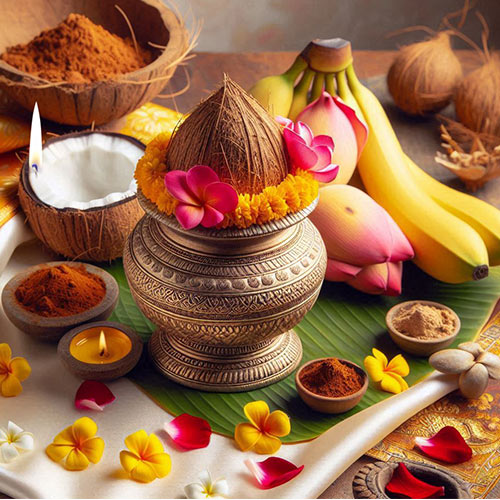
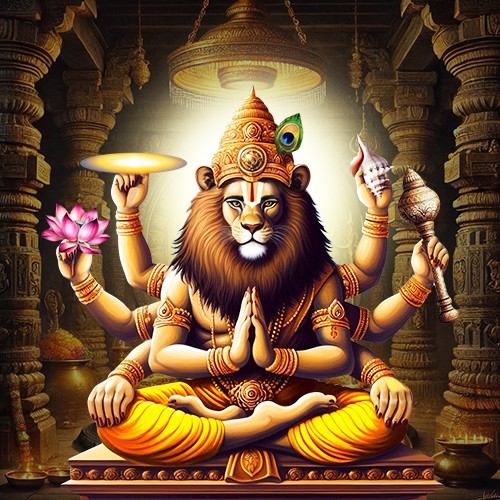
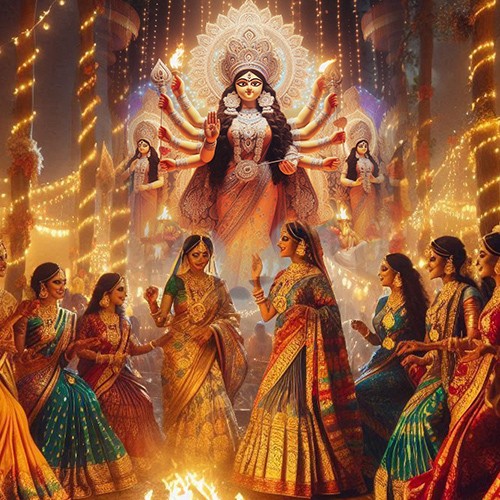
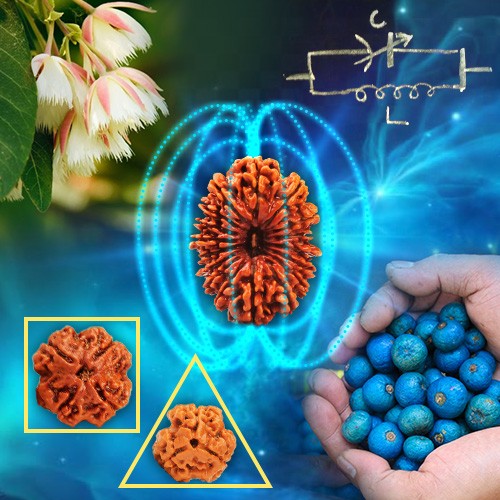

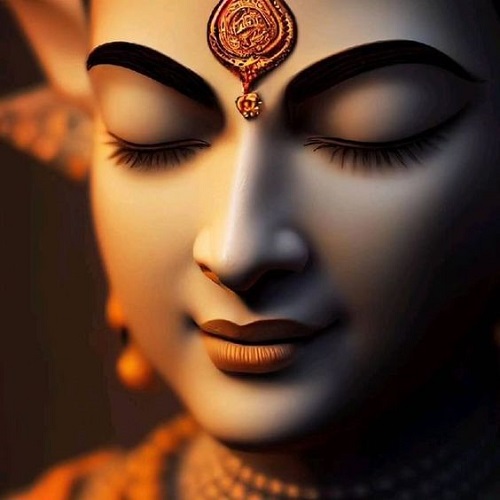
.jpg)
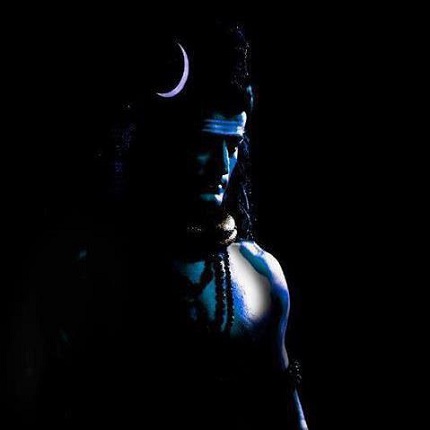
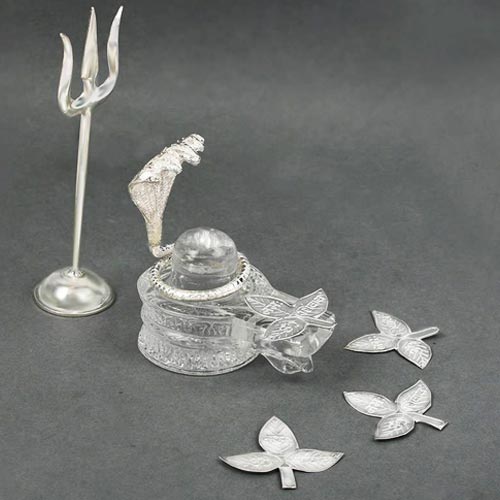

Comments 0
Leave your thought here